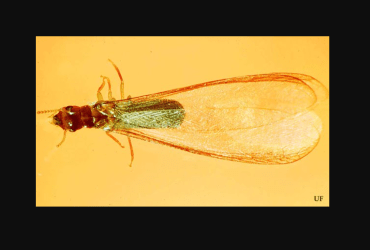

If you live in beautiful Brevard County Florida, you have become accustomed to the great warm weather, beaches and natural trails with all the wildlife that entails. If you live in Titusville, Rockledge, Melbourne or all the way down towards Vero, you have also probably run across some of Florida’s most pesky critters as well.
Florida has its own native pests which are abundant and can really cause a homeowner or business owner quite the headache. But we also have imported pest problems which contribute to our overall struggles with pests. This applies to everything from the fire ant to some of the beetles you see flying through the air. But one type of pest in particular is our subject today: termites.
Identifying which type of termites are causing your problems helps in how you treat the problem. Recently, Dr. Thomas Chouvenc, assistant professor of Urban Entomology at UF, has been helping residents and businesses in Florida identify new species of termite so that they can understand how best to treat the problem.
“In South Florida, we have more termite species than any part of the U.S. and we’re dealing with some of the worst invasive species which are problematic, too, for homeowners and the tree canopies that surrounding suburban and urban centers,” he said.
Dr. Chouvenc and the University of Florida are addressing three types of termites specifically: drywood, the Formosan and Asian subterranean. “The drywood termites are usually recognizable all year long if you have an active colony. If you have coffee ground or sort of sand particles accumulating outside of a piece of wood or furniture, windowsill or baseboards.,” he said. “Also, another sign is once a year when the colony is mature, they will produce these wing termites which will create new colonies.”
The drywood termite in particular produces small colonies but they are more numerous than other termite species. Dr. Chouvenc said: “In Florida, one of the primary ways we remedy this is structural fumigation, which basically consists of placing a big tent around the house, inoculate with a gas to basically reset the house and kill everything in the house.” he said. “Then, as you remove the tarp, and the gas is gone you can reoccupy the house free from termites.”
Formosan subterranean termites present more of a problem because they come up from deep in the ground and can infest entire areas. They are able to re-infest a location after the type of treatment mentioned above has been applied. That is why it is important to treat the home and the area around it. Setting up termite barriers in conjunction with other forms of treatment are the best way to handle subterranean termites.
Another type of termite which has taken hold in Florida is the Asian subterranean termite, which is essentially the tropical cousin of the Formosan. “Because it’s tropical, it’s metabolism is a little more adapted to this kind of hot and humid weather and is therefore is very well established now,” he said. “In just 20 years it has spread significantly in many urban areas around South (and parts of Central) Florida and not only poses a problem to structures, but it’s also found to really affect urban tree canopies. We started noticing we’re starting to lose historical trees, so we’re really concerned, over time, the landscape is going to change.”
